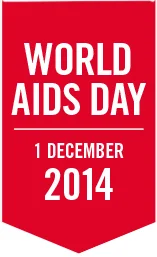It turns out the oily wind that a subway train brings into a subway station carries its own passengers with it: bacteria DNA.
As passengers step into the car and compete for seats, they do so thickly coated with the DNA of millions of microscopic parasites.
But do not be alarmed. Recent news stories have reassured us that while DNA for bubonic plague can be found in the nooks and crannies of New York City subways, we should not worry a cross-town ride risks the plague any more than asymptomatic patient Craig Spencer spread Ebola.
We should extend the same logic to hospital infection control.
Every few months there is a new article confirming that doctors, nurses and the things they wear and use are not sterile. NOOO! Stethoscopes, ties and our beloved white coats in particular have drawn ample attention for their unsurprising propensity to - gasp! - have bacteria on them.
This is useful research, and hypothesis forming. Might doctors and nurses contribute to the epidemic of healthcare-associated infection (HAI) via fomites like these?
Absolutely, they could.
But our reactions to this interesting hypothesis have been far from scientific. We have gone from hypothesis to heartfelt belief in five seconds flat.
One second we know stethoscopes and ties and white coats have bacteria on them and the next we conclude that we should do away with the lot of them. Britain's NHS, for instance, famously adopted a "bare below the elbows" stance in 2008, and US infection control mavens have recommended a similar policy recently.
Where's the science?
We all want to prevent HAI's, and lord knows the physician fashion index would rise by fully 2.5 points if we left our silly white coats at home (excellent logistical points made by an esteemed surgical blogger aside). But before we invest in nationwide changes to attire and clinical practice, we should convert these reasonable hypotheses into real evidence.
If going bare below the elbows, or skipping neckties, or burning our white coats, really will protect patients, then we should be able to prove it.
Before we draw conclusions, let's do the damn experiment: compare infection rates in comparable patients cared for by providers who do or do not wear neckties, or who do or do not subscribe to a BBE policy, whatever. Bring on the data!
It's not that easy, you say?
I understand. Science is hard.
If we can't show the intervention works, why invest in it? It is no great challenge to leave our ties at home, but until we base our recommendations in science the hard work of culture change may not be worth it. Why not just make the change? Well - how well is that argument working so far?
Let's be scientists people, lest we get schooled one day that these stories of stethoscope contamination are as alarming as bubonic plague DNA found in the New York City subway.

![[ M U R M U R S ]](http://images.squarespace-cdn.com/content/v1/51efa33ce4b09afa04cb2a66/1376911411704-LDY4UEIH1WRGPUXTMLJU/Logo.jpg?format=1500w)













